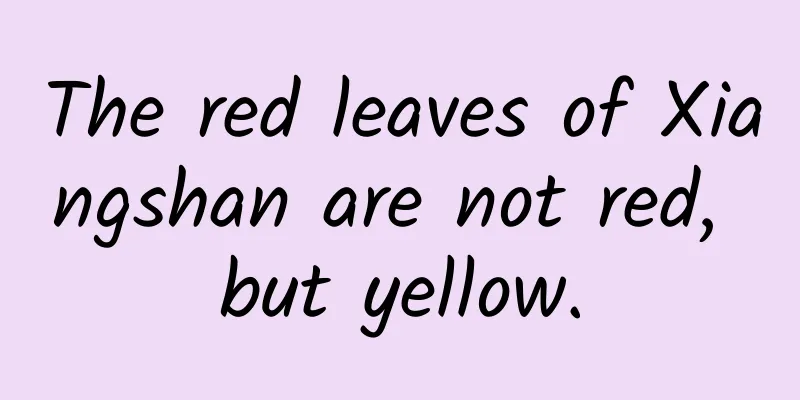The end of the taste is the poetry, wine, mountains, rivers and seas.

|
Written by Wei Shuihua No.1 Food and wine pairing is a sweet problem that has troubled mankind for thousands of years. Since the first day of the birth of wine, this irresistible drink, people have never stopped thinking about how to enjoy it. Undistilled wine contains a lot of residual sugar and amino acids. People often add ingredients to highlight the flavor level, such as adding ginger and plums to warm rice wine; adding cinnamon and orange peel to hot red wine; adding crushed ice and lemon to craft beer... The side dishes of non-distilled liquors are simple and dominant. A plate of fried peanuts, a piece of cheese, a few slices of raw ham, and a bag of French fries fill the mouth with highly concentrated flavors. In this logic of food and wine pairing, the wine is the supporting role and the dish is the protagonist. Distilled liquor is just the opposite: the liquor after distillation and purification is cleaner and mellower. More importantly, trace amounts of higher alcohols, esters and ketones, during the aging process, give rise to a mellow, sweet, fresh, long-lasting and aftertaste that leaves much to the imagination, making it a well-deserved protagonist on the table. At this time, the dishes as supporting roles present another look, such as pan-fried lamb chops and foie gras paired with brandy; smoked salmon and bacon paired with whiskey; fillet steak and egg soufflé paired with gin... Their commonality is that they use precious ingredients and complex craftsmanship to decorate the sharp edge of distilled liquor. Of course, the pairing of Chinese liquor with food also follows the standards of distilled liquor. ©Guo Mi Dongjiu·Baicaoxiang with shabu-shabu mutton, authentic Chinese flavor Whether it is the rich flavors of Sichuan cuisine, the original Cantonese cuisine, the local Shandong cuisine, or the Huaiyang cuisine with its exquisite knife skills, they are all excellent side dishes for Chinese liquor. But the road to improving the pairing of liquor with food is far from over. Horizontal screen is recommended ©The mountains and rivers where Guomi Dongjiu was born: Zunyi Loushanguan No.2 Bluefin tuna - few people know that this high-end fish, which is often auctioned at sky-high prices today, was not popular more than a hundred years ago. In Japan at that time, people preferred to eat white fish such as sea bream. The reason is that the Japanese have not eaten red meat for a thousand years since Emperor Tenmu issued the "meat ban" in 675 AD. In the recipes consisting of vegetables, rice and sea fish, people's tastes have been cultivated to be lighter and lighter, and it is difficult to accept ingredients that are rich in fat and full of tension. After the Meiji Restoration, Japan lifted the meat ban, and red meat represented by wagyu and tuna became popular. In particular, tuna belly (big belly), with its juicy and tender taste and multi-layered taste, soon became one of the most expensive ingredients in Japan, and evolved into a pleasing fish-cutting ceremony. The so-called "fish-cutting" refers to the process of cutting a whole bluefin tuna into pieces for cooking. It is a test of the chef's knife skills and a highly ornamental technical performance. The chef first cuts the fish from the pectoral fin, then cuts from the side of the fish, splits the body along the side of the tuna, and separates the bones and meat. Finally, it is divided into long strips according to the parts, and cut into small slices or small pieces according to the customer's appetite and the shape of the container. The whole process requires not only the chef to have a deep knowledge of fish anatomy and skilled techniques, but also the spiritual cultivation of cutting fish. The fattest part of the belly of bluefin tuna is called "frost", where the fat is integrated into the fish meat, creating a frost-like texture. When used to make sushi, it can blend perfectly with the soft and glutinous sushi rice; and the bottom of the belly is the "snake belly" where the tendons and fat overlap. This part is very valuable, but more difficult to handle. If eaten directly, the tendons are difficult to chew, but if they are marinated and matured with soy sauce, mirin and fine white wine, they can obtain unparalleled sweetness and tenderness. If the snake belly is marinated with Dongjiu Baicaoxiang, it can add more points. The unique herbal compound aroma of Dongxiang wine can provide the snake belly meat of tuna with a graceful temperament; and the mellow body of the wine is more conducive to softening the tendons, taming the originally unruly taste properly and clearly. An interesting detail is that even today, the fatter salmon is still far less expensive and popular than tuna. In fact, this is a compromise in taste: white fish represented by sea bream have high protein content, low fat content, light taste and lack of tension; while salmon is just the opposite, rich in fat and a strong sense of fullness after eating, but low in protein and lacks long-lasting sweetness. Tuna takes the best of both worlds, and achieves a certain balance between fat and protein. From the perspective of taste, it is soul-stirring, with a full feeling in the mouth and the sweetness of seafood; from the perspective of health, it can bring people more comprehensive and balanced nutrition. -END- ©Grand fish opening ceremony at the Herborist Night Few people know that this place was once a century-old historical site in Chengdu - Majiaxiang Zen Temple. Dongjiu chose to hold the "Baicaoxiang Night" here, not only for food and wine tasting, but also for self-improvement: With an inclusive attitude, it connects healthy ingredients from mountains, rivers and seas, and participates in their preparation, cooking and accompanying meals, making this table highlight the high-end taste and avant-garde wine pairing, creating a bright spot on today's Chinese dining table; with its orderly inherited formula and advanced craftsmanship, it has created the character of Chinese liquor that becomes more beautiful with age and its endless destiny. |
>>: Flaming lips and a small upturned nose, whose dream monkey is this?
Recommend
Expanding cooperation, China and Japan will conduct verification tests on international standards for autonomous driving
China and Japan are increasingly cooperating in t...
Astronauts of Shenzhou 13 are coming home soon! Why did they use the Dongfeng aircraft for the landing site this time?
"The landing site system will play an import...
How did Bullet Messenger gradually ignite the nerves of the Internet?
This article will start from the product highligh...
Drinking is harmful to your health. Here are 3 signs that you need to put down your glass and stop "self-harming"
Since the advent of alcohol, human beings have al...
Can't use WeChat Pay? Meituan responded: The payment system was abnormal and has been fully restored
[[401312]] On May 24, "Meituan cannot use We...
Java vs. Node.js: An Epic Battle
[[160272]] Image source: Photo by Flickr user Tsu...
How to operate a WeChat public account from scratch?
Post an article once, lose followers once This is...
Scary! Vegetables tied with tape are toxic, with formaldehyde exceeding the standard by 10 times?
Expert of this article: Huang Shan, Deputy Direct...
Baidu Ai Purchasing ranking rules are released. How to rank high?
First of all, we need to understand the ranking r...
Practical overseas advertising promotion: Where are your Google ads?
Where are your Google ads? Exploring “Ads that di...
Distribution mini program mall, how long does it take to produce a distribution mini program?
As of now, the number of mini programs has reache...
Experts complain about iOS 11: Data is not safe
ElcomSoft, a Russian company, said that now that ...
Why are domestic chips highly dependent on imports?
In 2013, the scale of China's chip imports rea...









